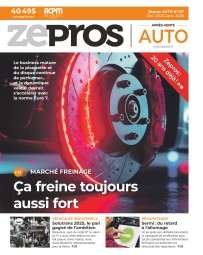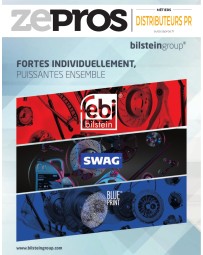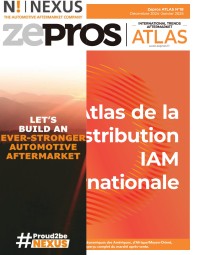
Roberto Caravati: “Never drop below 92% service rate”
Brembo continues its strategic growth in established IAM markets, including Europe, the United States, and the EMEA region. Roberto Caravati, Chief Operating Officer of Brembo Aftermarket, provides insights into a global market increasingly divided between premium brands and private labels, amid ongoing industry consolidation.
How was your 2024 and what are the growth levers for Brembo?
Roberto Caravati: Brembo Aftermarket is set to close the year with nearly 18% growth, outpacing the broader aftermarket brake sector, which expanded by an estimated 6-8%. This remarkable performance—three times the market average—highlights Brembo’s strong positioning. Europe remains a natural growth region despite challenges like energy crises and inflation. Our penetration in IAM is around 30% on average in Spain, Germany, Poland and even more in Italy, our domestic market. In France, we are below 5%, hence the creation of a new French subsidiary a few months ago
Elsewhere, the United States and Asia are significant levers. Additionally, significant gains have been achieved in NAFTA and Asia-Pacific regions, with the latter seeing a 35% increase. Across all regions, Brembo maintains a steadfast commitment to a 92% service rate, with our go-to-market approach. We offer tailored, sustainable solutions like our “greener” product ranges, disc and pad kits. We also have rapidly-developed OE solutions for the aftermarket such as our advanced composite carbon ceramic Brembo CCM discs.
What trends do you see in the global aftermarket market?
RC: The global aftermarket is witnessing distinct polarisation. On one hand, original equipment suppliers are entering the aftermarket space, driven by the need to recoup investments in electrification. On the other, sales are consolidating around private labels and premium brands, with little room for mid-tier products. This trend aligns with Brembo’s premium positioning, emphasizing the importance of workshops offering Brembo’s high-end ranges to customers.
Additionally, the shortage of skilled technicians capable of working on advanced vehicles poses a significant and worrying challenge. The problem is found across the entire sector and even beyond the aftermarket. The digitalisation of workshops is very real. Initiatives like Talents4AA are critical in addressing this industry-wide issue, and Brembo supports these efforts to ensure a sustainable future for the sector.
After inflation, what other factors can impact the sector?
RC: Inflation has significantly impacted the sector, driven by rising costs for raw materials and global transport. While rates are expected to stabilize at 2-3%, we must remain vigilant regarding geopolitical uncertainties that could put further strain on the market. Issues such as Donald Trump’s political resurgence and the Russo-Ukrainian conflict continue to influence transport costs and market dynamics. At this critical juncture, stakeholders must prioritize financial consolidation and maintain a close watch on profitability to navigate these challenges effectively. Our market is at a crossroads in its history.
Do you think that there is more to come in terms of concentration of European distribution networks, compared to the United States for example?

RC: Yes, it is not over yet. European distribution remains less consolidated. LKQ, AAG/GPC and PHE are small compared to the United States, where giants like Autozone, GPC, and O’Reilly dominate the IAM market. In Europe, mid-sized players continue to acquire competitors. This consolidation is a real challenge. Additionally, distant players like China’s New Carzone and Tuhu have yet to penetrate the market meaningfully. IAM success requires local expertise and proximity. With the European Union’s complexity across 27 member states, even regional players face significant difficulties understanding each other.
Who are your direct competitors in production?
RC: Brembo’s competitors in production have traditionally included established European players like Bosch, TRW, ATE, and Federal Mogul (DRiV). Brembo’s unique advantage lies in manufacturing its own discs and pads, ensuring unmatched quality and consistency, even for aftermarket products—a distinction that sets it apart from most competitors.
What is your preferred distribution channel?
RC: Brembo remains committed to traditional distribution channels, selling exclusively to resellers who then supply their own customers. This approach ensures a consistent value chain and avoids involvement with the dedicated online players like Autodoc or Oscaro. However, the growing digitalisation of sales by online platforms requires traditional wholesalers to remain vigilant. I believe in supporting our distribution partners to ensure their continued relevance in an evolving market.
How do you see the aftermarket evolving over the next five years?
RC: The aftermarket sector has a promising future. With declining new vehicle sales, consumers are keeping older vehicles longer, resulting in increased repairs and mileage. This dynamic supports a robust IAM market, particularly as the majority of vehicles remain internal combustion engine (ICE) models. Braking systems will remain essential regardless of powertrain type, ensuring Brembo’s continued relevance in both ICE and electric vehicle markets. The technology is not going to disappear and, as always, Brembo is poised to lead in this critical segment.







